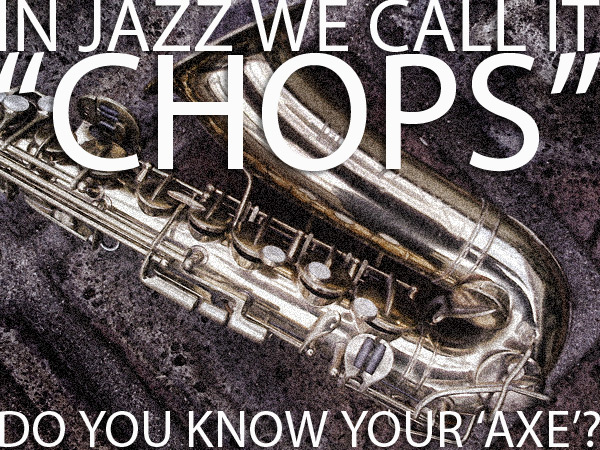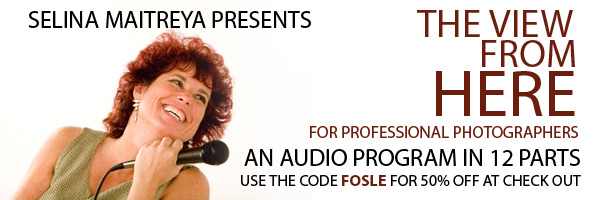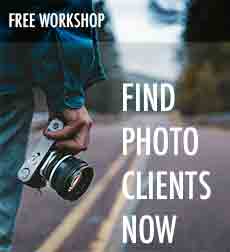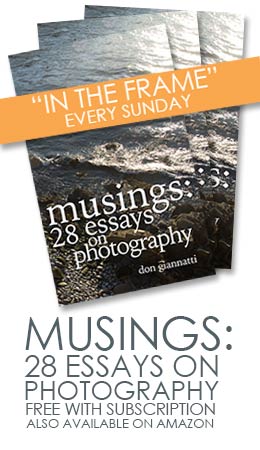A sorta Rant and sorta Rave:
Knowing your instrument in music means knowing it so well that you can pick it up and play whatever note you want to play. There isn’t a hesitation at all in the choice of keys, or fingering, or hand position. With a piece of music in front of the musician, he/she can play it perfectly the first time they see it.
In Jazz, we have improvisation… the making of music without any written notes. The musician listens to the chords or harmony and creates their own melodies or lines over them. That takes incredible mastery of the instrument, and a total inner awareness of the music as a whole. Something nearly autonomous takes over. The music flows from the jazz soloist through the instrument and into the ears of the audience.
There is no time to think about the ‘notes], or where the fingers go. None.
The same with photography. The instrument is different, but it does require an intimate knowledge of the workings of the camera, as well as what the relationship is between the operation and the making of images. The images should flow through the camera as music flows through the musicians instrument.
Basic tools and knowledge lead to basic imagery. Some photographers could put their camera on “P” and end up with well exposed, nicely focused, sharp photographs. The modern cameras are nearly flawless in presenting an image that is ‘acceptable’ on the basic criteria of the amateur photographer. Like beginning band; they can play “Twinkle Twinkle Little Star” pretty well after practicing it for a couple of months… but that doesn’t make them musicians with a capitol M. Not yet.
But there is a time when the musician gets more and more familiar with the instrument they are playing, and starts to understand the chord structures, rhythm, and scales that are part of the genre of jazz. They start to improvise… a little tentatively at first, but eventually there becomes… Bird, Miles, Monk, ‘Trane, Ornette, Elvin, Tony and so many more.
They know their instruments so well that it becomes an extension of what they feel instead of what they think. They hear the music and it plays through their instrument.
Photographers have cameras. All kinds of cameras. Some cameras do things other cameras wont. Or they do the same things differently. My small cameras are Nikon and Canon. Canon is the digital, Nikon is the analog. They focus manually in different directions. They load film differently, change ISO differently, mount lenses differently.
But they both take photographs the same way. I look through the viewfinder, make a billion instant decisions and trip the shutter. That is the art of photography… making those billion instant decisions and getting the synapses to recognize what the hell is going on and transfer some energy to my right index finger. Really fast.
The camera is my conduit for getting what I see onto a capture or piece of film. It is a tool that should be as well known to me as Bird’s alto, or Tony’s Gretch’s were to them. The tool needs to be an extension of me and my vision, and is simply what I use to capture what I see.
That means knowledge of what it does in relationship to what I want to do… and I think there are too many photographers who take that for granted. They don’t know their camera well enough to not have to think about it when they are working. It can be an impediment instead of a conduit.
When I go to make an image, I am seeing that image completed in my head already… sometimes I see the finished image before I even get the camera up to my eye. I start to ‘feel’ the image – or hear it… yeah, images make music to me. I hear different pieces when I am shooting… a rhythm from here a melody from there… it all plays into the image taking process for me.
I rarely have to think about my camera and the settings or the dials/switches and such to make it work. I learn that stuff through taking the time to familiarize myself with the camera so well, I can do many things without looking at it. I don’t want to play with my camera gear, I want to make photographs.
I see so many photographers struggling with their cameras while the moments of amazing images tick by them. Looking for this or that, trying to find the menu that does whatever they need – sometimes without knowing what it is they need to begin with. A devastating unfamiliarity that puts the camera at odds with the photographer instead of being an extension of their vision.
And yeah, sure the camera manufacturers sometimes make changes to the newer models so where something was is now moved to somewhere else. Arghh.. yeah. So what? Learn the new tool and work it into your system so that it isn’t ‘new’ any more. It isn’t a ‘new camera’ after it becomes ‘your camera’.
Can you imagine working a wedding and not knowing your camera intimately? The action moves real fast, and there are no do-overs. Or a photojournalist who misses a once in a lifetime shot because he forgot which setting his camera was on? Or a fashion photographer who forgot that you had to advance the film back by hand on an RB67 because it isn’t automatically advanced like the RZ67 that you had been shooting for a couple of months so you shoot about 20 shots on one frame and missed a couple of good shots that I… err… well, you get the point.
Every item on a camera deals with the reality of making images. Aperture and shutter speed and ISO combine for exposure. All three are integral in knowing what you want and how to get it. You can change the focus areas on the screen, and from center-weighted exposure to spot. Do you know which is which? Choosing an aperture controls the DOF that you will get with the image… and that is based on the distance of the focus. How do all the tools of the camera work toward making the image you see in your head? They work in tandem with the knowledge of photographic principles that have been ingrained into your psyche.
They have been ingrained… right?
We discuss the concepts of photography on this site a lot, but for now let’s discuss your ‘axe’, that camera that is hanging around your neck all day. That tool that you use to instantly make the images you see in your head is your extension of creativity.
Here is the challenge: And of course, there is no way we can no if you cheat. But, except for that moron from Redmond, most of you will not cheat.
Here is a list of 10 things I want you to do or answer instantly. No thinking… if it takes you more than a half second, mark it down. And then you know what to work on.
Set your camera at f-8, ISO 200, and 1/250 shutter speed, and manual.
Without Looking at your camera:
1. Identify where the ISO menu is. Bring it up and change it to ISO 100.
2. Change the current shutter speed to 1/2000.
3. Take the lens off and change it out without looking at the camera.
4. Identify where the focus spots control is.
5. Change the aperture to f-22.
6. Identify where the Card Format control is, and bring it up.
7. Change the lens from auto-exposure to manual exposure.
8. Identify the custom white balance tools/method.
9. Change the camera from Manual to Aperture Priority.
10. Change it back to the original settings above.
Here are a few more things that will help you to become intimate with the tools and craft of photography.
11. Can you recite the apertures of your lenses in whole stops? Can you do it in 1/3 stops?
12. Where are your cards kept in your bag? No searching…
13. If your flash is on 1/16 power and you want it to be two stops brighter, what would you change the power to?
14. What is the highest shutter speed your flash can sync with?
15. How would you guesstimate the aperture/speed setting for a person being side-lit by the sun with ISO 400?
16. Which would give you deeper DOF… f6.3 on a 24MM lens or f8 on a 200MM lens from the same spot?
17. If you wanted to increase the perceived area around a subject would you move back with a telephoto or move close with a wide angle?
18. If you were shooting a sunset portrait on a beach and wanted your flash to be more ‘warm’ without changing the color of the sky would you gel the camera or the flash? With what?
19. If the flash is set to f-8 on the subject, and the ambient reading is f5.6 @ 1/125, will the subject match, be lighter than or darker than the ambient at an exposure of f-8?
20. In the above example, what happens to the subject exposure (f-8) when I change the shutter speed to 1/160?
The answers for the second set of questions are after the jump.
There are few ways to increase your photographic ability more than shooting a lot of pictures… all the dang time. Of course there are more ways to get your tools to be an extension of your vision, rather than getting in its way, but this should start you thinking about automating it… in your mind.
Being able to shoot without thinking about the tools is like being a jazz player taking a solo on “Green Dolphin Street” – and bringing the house down.
Thanks for dropping by. You can follow my every move on Twitter, and please leave comments if you agree, disagree or simply have a question.
11. Can you recite the apertures of your lenses in whole stops? Can you do it in 1/3 stops?
1, 1.4, 2, 2.8. 4. 5.6, 8, 11, 16, 22
1, 1.4, 1.6, 2, 2.2, 2.5, 2.8, 3.2, 3.5, 4. 4.5, 5, 5.6, 6.3, 7.1, 8, 9, 10, 11, 13, 14, 16, 18, 20, 22
12. Where are your cards kept in your bag? No searching…
Mine are in the top flap in a card holder on the right side of the bag. Yours?
13. If your flash is on 1/16 power and you want it to be two stops brighter, what would you change the power to?
1/4
14. What is the highest shutter speed your flash can sync with?
1/250 on my Canon, 1/125 on my Nikon, 1/500 on the Hasselblad, RB’s and Bronicas. Yours?
15. How would you guesstimate the aperture/speed setting for a person being side-lit by the sun with ISO 400?
Sunny 16 rule: Open up one stop for side lighting.
F-11 @ 1/400
16. Which would give you deeper DOF… f6.3 on a 24MM lens or f8 on a 200MM lens from the same spot?
6.3 on the 24MM.
17. If you wanted to increase the perceived area around a subject would you move back with a telephoto or move close with a wide angle?
Moving closer with the wide angle will exaggerate the distance around the subject
18. If you were shooting a sunset portrait on a beach and wanted your flash to be more ‘warm’ without changing the color of the sky would you gel the camera or the flash? With what?
You would gel the flash. Gelling the camera would also alter the sunset colors as all would pass through the gel. Gel the Flash with 1/4 CTO or 1/2 CTO to bring the cold flash color up to the warm ambient.
19. If the flash is set to f-8 on the subject, and the ambient reading is f5.6 @ 1/125, will the subject match, be lighter than or darker than the ambient at an exposure of f-8?
Brighter. The background needed more light to get correct exposure so it is underexposed at f-8.
20. In the above example, what happens to the subject’s exposure (f-8) when I change the shutter speed to 1/160?
Nothing.
Thanks for visiting Lighting Essentials. We do workshops, and could be coming to a town near you soon.







Great checklist! you should post it in a shall-not-be-named internet forum when the “what setting should I put my strobe on to shoot a wedding” questions come up 🙂
it’s interesting that when I first started shooting I got all excited about my dslrs having auto this or program that, when I got to the point where I could do your checklist in my head, I began to really appreciate my manual cameras more and more. My Mamiya 6 (120 rangefinder) is still my absolute favorite camera to shoot with. it has a grand total of 3 controls – aperture, shutter speed and focus 🙂 It just gets out of my way and lets me take pictures… (the 1/500 sync speed doesn’t hurt either)
LOL… well, everyone starts somewhere.
Damn I love that Mamiya 6 too. Wonderful camera.
Do you have a set of lenses with it as well?
And yes, my favorite cameras are the ones that have the fewest controls. Hasselblad, RB’s, and view cameras. I do like my DSLR’s, but there is something so Zen like about shooting the camera with the simplest of settings… thinking more about the subject.
Great article! I agree 100%….Mind if I use this article when teaching my students at a local night school? I a pro photographer and there are so so many “pros” that can’t do this…I find it amazing. The music analogy is perfect.
Hi Gregory,
I don’t mind if you use it at all.
My goal is to educate the photographers entering the business. If we do that before they wreck themselves and bring others down with them, then they win, we win, and the industry wins.
I totally agree about knowing your camera. I recently purchased a Canon 7D and have taken at least 500 photos just acclimating myself to the differences with my 30D. Changing focusing modes, settings, learning the different button layout; comparing the noise levels between the cameras at different ISOs. All throwaway shots just so I don’t have to think about the camera when I shoot, just the image I am trying to create.
This is where digital camera fall down spectacularly compared to film. Aside from a view quirks (the shutter speed ring on an Olympus and Nikon’s lens mount), all 35mm cameras were used the exact same way, and most (if not all) view cameras as well. Medium format was a morass of different buttons and dials and knobs (Quick! Focus on something with an RZ67! Ok, now try that on a Hassie!), but for the most part, the film rewind button was in the same place and the shutterspeed dial was in the same place and if you learned it on one camera you could apply it to most other cameras.
Not so today. I don’t mind the complicated gadgetry on today’s digital cameras, as all those bells and whistles really do allow for some new and exciting styles of photography: What I mind is there’s no standardization. Every new camera forces you to re-learn everything you thought you knew, doubly so if you switch camera manufacturers.
And don’t EVEN get me started on the UI in the software.
This is so cool to read especially after just taking the Lighting Essentials Workshop (Houston). I have to admit before the workshop I could answer very few of the questions on the second set.
I am proud that now I was able to answer 90+% without counting my fingers (LOL). (My family and friends now think I am cool too….LOL) Very cool.
If you can’t answer these I encourage people to take Don’s workshop. You will be happy you did!!
“(My family and friends now think I am cool too….LOL)”
And that is the purpose for it all anyway!
Thanks for the plug, Steve.
yeah, I have the the 75/3.5 and 150/4. Have borrowed/shot with the 50, and it is gorgeous… gonna have to pick one up one of these days…
I totally agree it’s very zen-like… I love not thinking about what focus mode it’s in or if I forgot to reset the custom WB or whatnot… just set exposure, focus and shoot… it’s beautiful…
This was a good test. I did 90% or higher on everything except my shuttersheed. If the camera would reset to a default after every turn on/off, then maybe. The only way I can see to figure out where you are starting is to dial up or down to you minimum or maximum shutterspeed, then work from there.
Back in the day I could judge shutter speed by the sound of the shutter whishing across the sensor, but I’m afraid these ears aren’t quite what they used to be…… 🙂
I got all of that except the stops on my lenses. Still. nice to know I know my camera better than I think I do.
When you mention formatting, is it OK that the only way I could think of (instantly) was it’s location on my quick access menu?!
Hmm…so, I know my camera, just need to develop my eye now.
Bugger.
Great post, and even though I am a definite novice, I have been working over the last year to understand the technical ins and outs of my camera. I have gone down this path because I really need to work on the most important bit of my photographers kit – the kit between my ears – and I found fumbling around with the camera controls prevented me thinking about the image I wanted.
So I did alright with this test. The only things I couldn’t do “blindfolded” was format the memory card (and I have to say I don’t want to be able to thanks). Oh, and stops in 1/3rd increments requires thinking as well.
@Josh B, this was a eureka moment for me 6 months ago: every click of the little shutter speed/aperture dial is exactly 1/3 of a stop. A stop is a change in light by a factor of 2. So to go from 1/250 to 1/2000 think: 250*2=500*2=1000*2=2000 or 3 stops difference, so that means 9 clicks of the wheel (assuming your camera is set to 1/3 stop increments). Once I figured this simple thing out, using the camera without thinking became possible. Sorry if I am stating the bleeding obvious – it was little things like this that flicked a switch for me.
Darren
Hi all!
After reading the list I’m even more convinced that staying with my old Minoltas (XD-5/7) is the right choice for me – I know them by heart. Buying a digital SLR would cost me month of getting to know my gear as good as I’m now ith my minoltas/mamiyas.
And I never have to worry about where to find my CF cards 😉
Great post – your articles make me think about my working style – and that is what’s needed from time to time.
Best regards,
Markus
What a great post. I’ve known for ages that I need to master my camera, but in sitting down and pushing buttons, nothing seems to stick.
Thanks for giving me something to aim at.
I’m surprised you didn’t ask: Did you get that sync speed from the manual, or did you test it?
My D50 is documented with 1/500 but it reliably syncs up to 1/1000, 1/2000 if it’s a fast flash, even with my CyberSyncs in repeater mode.
My D90 is documented at 1/250 but there’s noticeable vignetting on the bottom above 1/200 if I’m using a radio trigger.
And to add to the fun, now go put your flash into a softbox – can you change the flash from 1/8 to 1/2 without looking? how many “clicks” or presses of a button? How about changing a stop of light by moving the flash closer or further from the subject?
Great article, Don. Really hits home how important it is to know one’s gear like the back of you hand. (Wait. When did I get that mole…?)
Unlike Steve, my family doesn’t consider me any cooler now than prior to taking your class. Oh well – I sure learned a lot!
Another brilliant article. It’s cool to think back two years ago when I would have read this open mouthed and drool running down my chin as I tried to decipher what any of this means. That knowledge comes from doing it over and over and over again.
There is no other way.
re: Identify where the ISO menu is. Bring it up and change it to ISO 100
if only Nikon cams would go to ISO 100 😉
Nikons go to Lo1.
And in contrast to other popularly held flickr forum manifests that say it isn’t ‘good’ – I can tell you from experience… it is.
Lo 1. ISO 100.
There ya go.
I don’t think I could find the memory card format blindfolded, but the rest are easy. That said, I’ve been shooting all digital since 2004 and have never actually needed to format a card that quickly – I always format all cards before leaving for the shoot.
I was able to correctly answer the quiz questions but I still don’t have camera mastery. Having an unwieldy user interface on my Mark II is intimidating, but I am determined to nail the camera settings workflow without having to constantly look before the Miami workshop! Wonderful post!
No worries.
Yes… those Mark II’s are a problem.
I will bring my old Rebel and we can swap… much easier to use.
Heh… 😉
If you are that familiar with your gear, you will be so much more prepared.
Then we focus on the imagery.
See you in WPB!!! Woohoo.
I can do the aperture, shutter and ISO changes without looking in manual as well as exposure comp adjustments in Av. I can actually do all of the above while looking through the viewfinder or blind. Need to practice on the rest! Everything else requires 2 buttons being pushed at the same time. I promise I’ll be on it like white on rice by the WPB workshop!
Great article and I’m glad I was able to answer most of the stuff correctly *whew*. Thanks for your helpful insights.